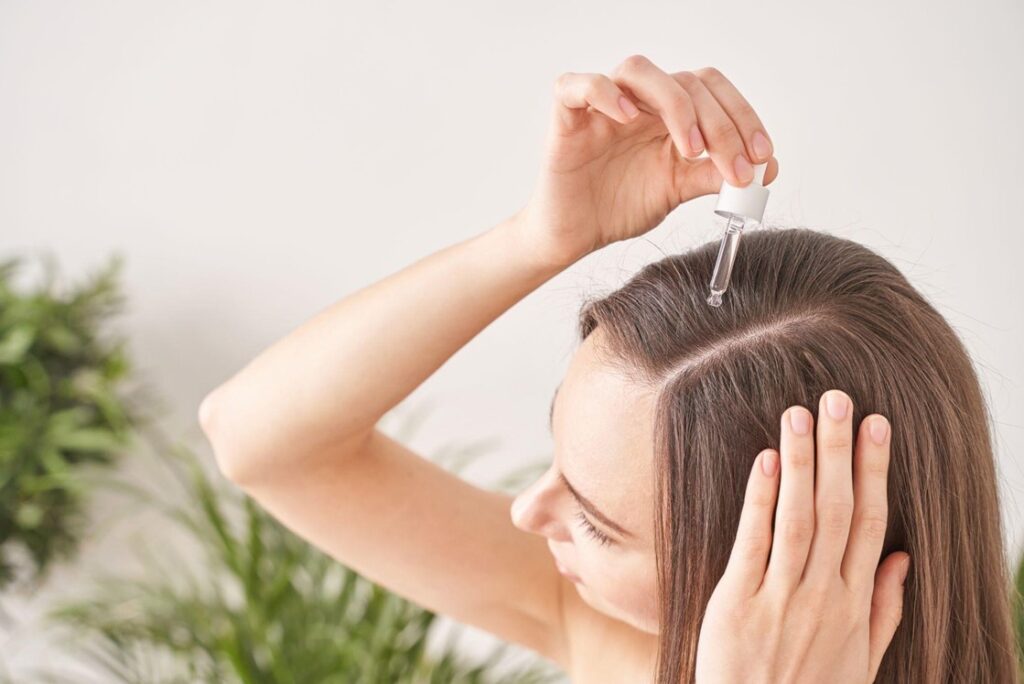
Essential oils are an excellent remedy for preventing hair loss. Some can even boost hair growth by improving blood flow to the scalp with natural chemical compounds and fatty acids present in them.
One of these powerful organic essential oils for hair is argan oil. Known as liquid gold, organic argan oil can be used in various ways to prevent hair loss and improve scalp health.
This article will discuss everything you need about organic argan oil for hair. Read on to learn how to use this organic oil to boost hair growth and improve scalp health.
What Is Argan Oil?
Argan oil is an organic essential oil extracted from the kernels of argan trees native to Southwestern Morocco; if you’re looking for other organic oils to complete your collection, we recommend this sustainable shop. It isn’t uncommon for manufacturers to label their products as Moroccan argan oil, boasting that it’s from the native lands of this tree. However, Moroccan or not, any organic argan oil has the same benefits for hair.
Organic argan oil has a subtle earthy scent, similar to olive oil. It has a golden color, hence the name liquid gold. This light oil has many uses. Numerous beauty products have argan oil in them to draw moisture into the skin. It also prevents sun damage with its antioxidant properties.
Beyond cosmetic purposes, argan oil is commonly used as dressing for pasta and couscous in Morocco. It’s also a staple ingredient for amlou, a thick paste for dipping bread made from toasted almonds, honey, and argan oil.
Benefits of Organic Argan Oil for Hair
Organic argan oil isn’t only for moisturizing the skin and adding a finishing touch to dishes. It’s proven to have many benefits for hair. The linoleic and oleic acid in argan oil moisturizes the scalp and hair, adding a natural shine. This helps the hair maintain moisture and prevent dryness.
Argan oil also improves scalp health with its antioxidant and anti-inflammatory properties. It prevents scalp conditions that can lead to hair loss, such as seborrheic dermatitis and psoriasis.
Organic argan oil also adds a natural protective layer that strengthens the hair. If you’re experiencing breakage during combing or styling, you can use argan oil to reduce split ends and support your hair.
How to Use Organic Argan Oil for Hair?
There are various ways to use organic argan oil for hair. Since it’s a carrier oil, you can apply it directly without combining it with another organic oil. You can also mix it with essential oils known to promote hair growth, such as lavender or rosemary.
Below, you’ll find two easy ways to use organic argan oil for hair health.
Massage Argan Oil Into the Scalp
One of the best ways to get the full benefits of organic argan oil for hair is by massaging it into your scalp directly. Here’s how you can do that.
- Add 10-12 drops of argan oil to your scalp.
- Using your fingertips, massage it into your scalp and hair for about 10 minutes.
- Split your hair to ensure your hair is completely covered in organic argan oil.
After massaging organic argan oil into your scalp and hair, you can wash it in four to eight hours. Alternatively, you can do this before bed and wrap your hair in a towel to wash in the morning. Organic argan oil can be used daily, but it’s best to start with a few times a week before wash days.
Mix in With Shampoo
Another way to use organic argan oil for hair is to mix it with your shampoo. Simply add ten drops of argan oil per ounce of shampoo or five drops for a handful. Then, wash and rinse your hair as usual. You can also purchase organic argan oil shampoo or continue to make your own by adding it to any shampoo.
Using Organic Argan Oil for Hair Growth
Now that you know how to use organic argan oil for hair, it’s time to try it for yourself. Before you start using, note that it can take several weeks to see noticeable improvements in scalp and hair health.
Start using organic argan oil for hair one to two times a week and gradually more to see how your skin reacts. Also, consider performing a patch test before applying organic argan oil on your scalp, as any irritation on the head may be more severe than on your upper arm or back.
Leave a Reply